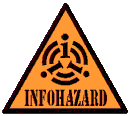| RSS FAQ | ||
| What is it? Last updated by Anon on Tuesday, 08/07/2001 - 18:21 | ||
Websites that publish new content regularly usually provide a list of news headline style links to their latest content. In addition to displaying these headlines on their own websites, it is very common for publishers to make them available for syndication, so that other websites or applications can also include their headlines. Headline syndication does not deal with the full text of articles, it is simply about syndicating an automatically updating list of headlines, with each headline being a link to the item that it refers to on the publishers website. RSS is the name given to a simple and well-established XML format used to syndicate headlines. Once a website creates an RSS file they have created a means to allow others to syndicate their headlines. The first version of RSS (RSS 0.9) was released by Netscape in March 1999 as a format for adding news channels to their My.Netscape.Com portal. Then in July 1999 Netscape released RSS 0.91, incorporating most of the features of a format called <scriptingNews>, which was created by UserLand. Shortly thereafter Netscape discontinued developing the RSS format, however UserLand persisted and RSS continued to grow in strength. In December 2000, the separate RSS-DEV Working Group released RSS 1.0 and Userland announced RSS 0.92. As of April 2001, Userland is now planning RSS 0.93. The lack of clarity in what RSS stands for or which version is the correct one to use can seem confusing to beginners. However these issues don't need to be addressed by a website wanting to create an RSS file. RSS is a very well recognised format, in fact it is often referred to as the most successful XML format to date. Some websites have a preference for one version, others create more than one RSS file and support multiple versions and a recent survey suggests that the first two versions of RSS (0.9 and 0.91) are still by far the most popular. | ||
| previous | index | next |
| What is it? | up | What is it? |
Handbook


